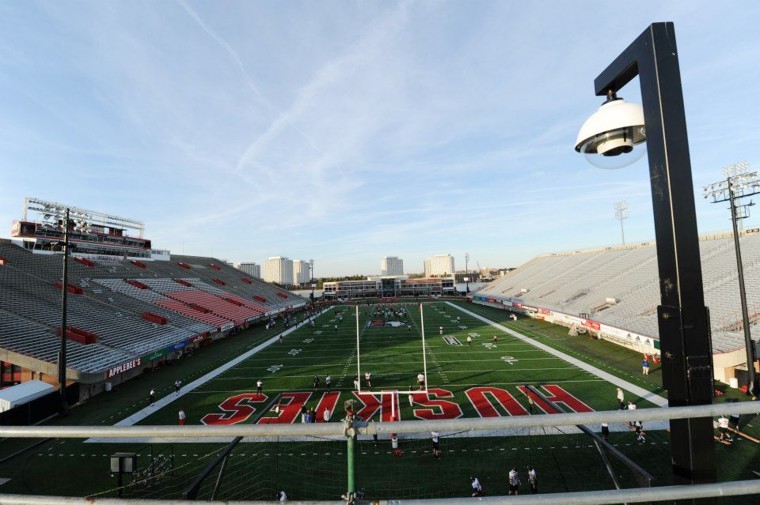Dual purpose high-tech installations hit Huskie Stadium
Two high-definition robotic cameras have been installed at Huskie Stadium to eliminate the use of aerial lifts and platforms when filming football practices.
November 17, 2011
Two robotic cameras were installed at Huskie Staduim in order to improve safety and provide quality footage for NIU football coaches to use for training purposes.
According to a press release, the new cameras will replace the use of aerial lifts and platforms for filming football practices.
Jay Orbik, director of Media Services, said the cameras’ primary purpose is for practice.
“It’s very important to get the right shots for practice,” Orbik said.
The cameras can also be tied into the video board system at Huskie Stadium in order to provide fans with a better show during the game, Orbik said.
The university began looking at filming options after the death of a University of Notre Dame student, Declan Sullivan, who was killed when an aerial lift he was in fell during high wind conditions, Orbik said. NIU had safety policies in place, but did not have a safety policy written prior to the incident at Notre Dame.
“We wrote the safety policy after the Notre Dame incident,” Orbik said. “Now, it doesn’t matter how windy it is.”
According to the press release, the cameras use technology currently used by the NIU School of Music for its Internet2 Distance Learning and Performance Project. Orbik said the school of music uses the project to provide real-time, two-way video interaction over long distances. The project began several years ago when robotic cameras were installed in the NIU concert hall.
“NIU is the national leader in the use of high-bandwidth technology for instructional purposes,” Orbik said.
The university had planned to have the cameras up before the start of practices for the 2011 football season but ran into a few issues with installing them. The tsunami that hit Japan in March delayed the import of parts necessary for the installation of the cameras, Orbik said. The first camera was eventually installed two weeks before the start of football practices, but the installation of the second camera was delayed due to funding issues.
“The biggest expense was running fiber optic cables from the Yordon Center to the field,” Orbik said. “The second camera was installed three weeks ago.”
Orbik said while the university will no longer have student employees on the north endzone platform for filming purposes, it is still certified as safe and will remain for use by other broadcasters.
“There’s nothing that’s going on on campus that justifies a student getting hurt,” Orbik said.



